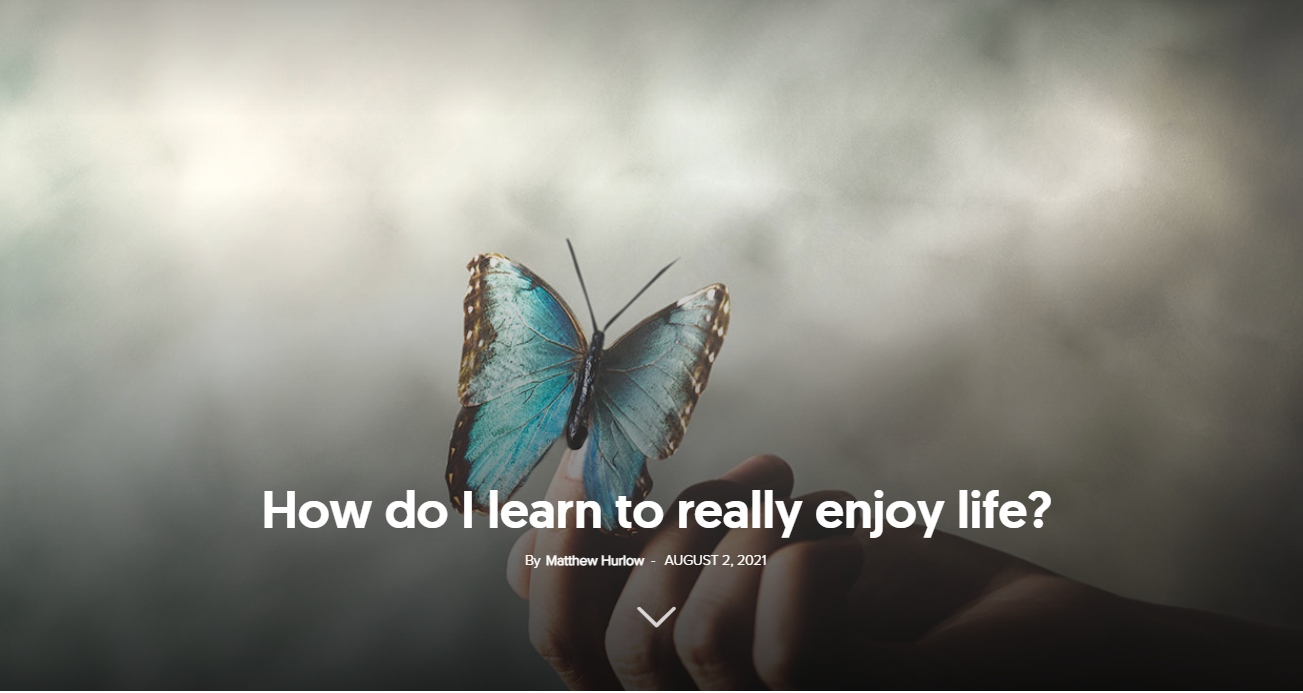A fulfilled life is built on the foundation of faith and the desire to imitate the character of God, in a world conceptualised around the truth.
The heat of almost 40 degrees had drained our strength. Breathing slowly, we neither moved nor looked at others. In the silence around the tomb, I heard a few words: “He lived a fulfilled life.”
In that lukewarm softening of even the desire to think, the statement probably went unnoticed. After all, it was just one of the many snapshots in the iconography of the burial procession.
A few years later, I was sitting at a round table with my high school classmates who had responded to the invitation to meet again two decades after graduation. Of all the periods of my life, the high school period has been transformed into one of the most populated and most vivid memory albums. That’s why it wasn’t hard for me to turn the last known page and look back at their faces comparingly.
I don’t know why—and I didn’t even try to find out—but one of them was represented by his brother. He spoke last: “He was an accomplished person…” were the words which I felt gathered the essence of the message about his brother.
“He succeeded”, “He is doing well”, “He has done something with his life.” These are the lapidary acknowledgments capable of instilling peace in our souls, seals with symbolic value that we hope to get on the personal summary that the occasional archivists compile for us—even when deep down we perceive our souls rather as parental homes abandoned and invaded by weeds, which live only in the light of the dreams associated with them.
This is just another indication that we are hoarding any support we can get for the dream that will not allow itself to be broken: that in the end our lives will gather together all the links of a history that needs to be retold and will be eagerly listened to. But what does such a story entail? How should it be written? These are questions that many of us feel we will never find the final answer to.
One of the reasons why this happens is that the ideal of the “fulfilled life” evokes in us new atmospheres, as diverse as the memories or projections of our imagination.
The concept of a fulfilled life is transposed into a multitude of different pictures, not infrequently antagonistic. For some, it means success or money, for others, a stable and happy family. For some it means freedom, autonomy, and a bohemian spirit, for others, austerity and isolation, even monasticism.
Some prefer pastel and harmonious colours, others look for bright and contrasting ones. As for me, if I don’t have time to move the whole pile of stones, I always try to move at least one more stone than I feel I can. That’s probably one of the reasons I’ve often found myself thinking how I could bring together heterogeneous or even contradictory standards of the fulfilled life. Not compulsively, but rationally and in a maximalist manner.
However, I think many of us constantly have such impulses, even if we are not maximalists. Paradoxes attract us just as seeds thrown in the field attract birds. Many of us want a simple life, but also numerous achievements; abundance, but also modesty; time for family, but also for many other projects; the chance to change the world, recognition, but also as much free time and peace as possible; spirituality, but also independence from its constraints, and so on.
From these often-inconsistent desires arise not only our great turmoil and frustration, but also our attraction to the success stories of those who have apparently found the secret to such improbable symbiotic relationships. We dream with our eyes open and for this reason real life seems dull, insufficient, and unsatisfactory.
However, motivational stories are not written in real time, but in retrospect, in which the heroes sort out the colours which they used to paint their lives on the canvas.
Even when they are very honest with themselves, they retrospectively construct their story using filters, and their explanations and interpretations are no longer complete and especially not fully repeatable in someone else’s story.
However, it is worth allowing ourselves to be inspired. Inertia, inactivity, pessimism, or a kind of realism that keeps us from trying are probably worse than trying to include everything we see in others in our own journey to fulfilment. We need a critical analysis of success stories, but also the courage to always try new things.
***
So how do we select the colours with which we will paint the most important picture of our lives? How do we decide what to include and what not to include, how to avoid or correct mistakes, and how to end up with a sense of accomplishment?
By making choices. The colour palette is infinite; we will never be able to integrate them all. We must choose rationally and cautiously, but also boldly enough, and we must do so in anticipation of how much we will enjoy our choices in 20, 30, or 50 years.
First, we will have to decide whether or not we are interested in what kind of painting we will leave as an inheritance to those who follow us. Then we have to decide what matters most in the end, and the hierarchy of shades.
What will dominate? The purity of the moral, serene, spiritual life? The passion of the love for those with whom we have shared our lives? Determining the sacrifice for a purpose, a job, a discovery? The adventure of exploring the beauties of the world? What is the recipe we should use for combining colours so that the final picture is harmonious and becomes a source of inspiration for others?
There is no universally accepted recipe or standard. Everything takes shape and meaning through our choices, which we make inspired by the landmarks that we choose from among those accessible through birth, environment, or training.
In an attempt to accomplish our work well, we find that we need to believe someone. And we have to choose who we believe.
Whether we like such a frame or not, we all live by faith in what we choose—a holy book, a secular philosophy, a mentor. All the books we read, all the people we interact with, all the experiences we have become sources of “truth”. Does this mean that there are as many truths as there are people on earth?
If God exists, this is a sufficient condition for absolute truth to exist as well. And, if God’s existence cannot be absolutely proved or denied, we are again (where else if not?) facing a choice.
If we choose to believe in His existence, all our other choices will be determined by that original choice. We will look for the truth that comes from God to order the colours in our life picture according to the moral aesthetics that we learn from Him.
In a world thus conceptualized, the “fulfilled life” is built on the foundation of faith and the desire to imitate God’s character. The centrality of serving those around us takes precedence over all else, according to Jesus’s wise synthesis: to love the Lord our God and our neighbour.
Achievements of any kind or personal passions are not excluded, not even marginalized, but are transformed by the priorities that the choice to believe in God brings with it. Our painting is not chaotic, nor does it seek to belong to an artistic current. Even if it bears the traces of a long and complex process of creation, it is coherent and unequivocally declares its message—convincingly and inspiringly.
Norel Iacob (42) has a bachelor’s and master’s degree in theology and has worked for the past two decades as a pastor, professor, radio-TV director, and editor-in-chief of Signs of the Times Romania and ST.Network.




















